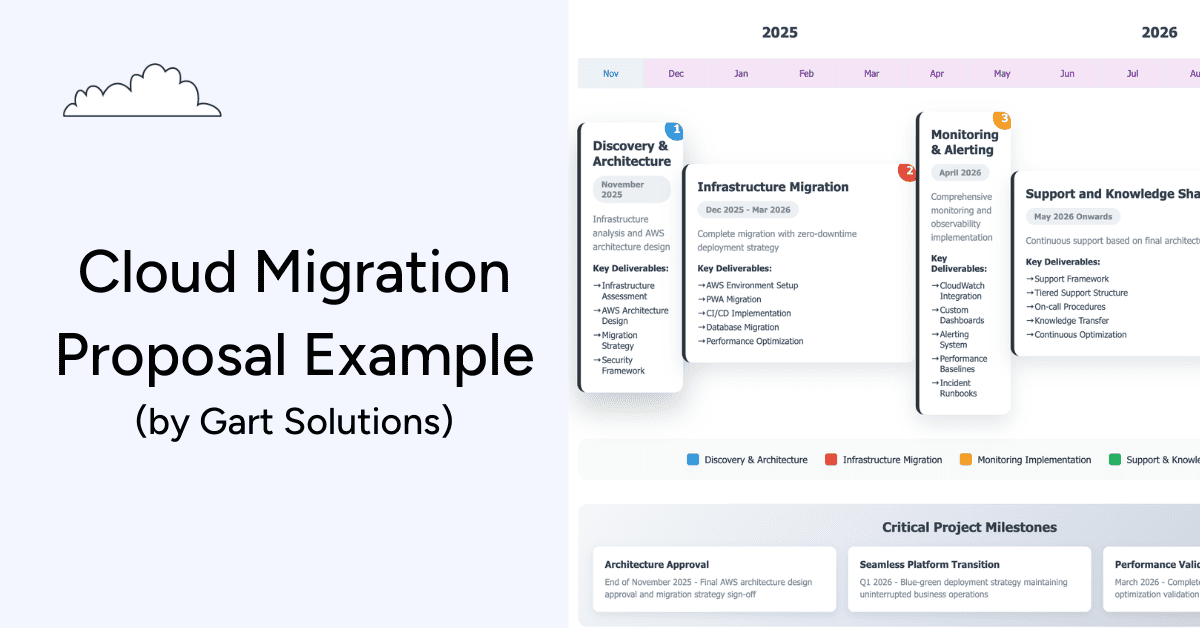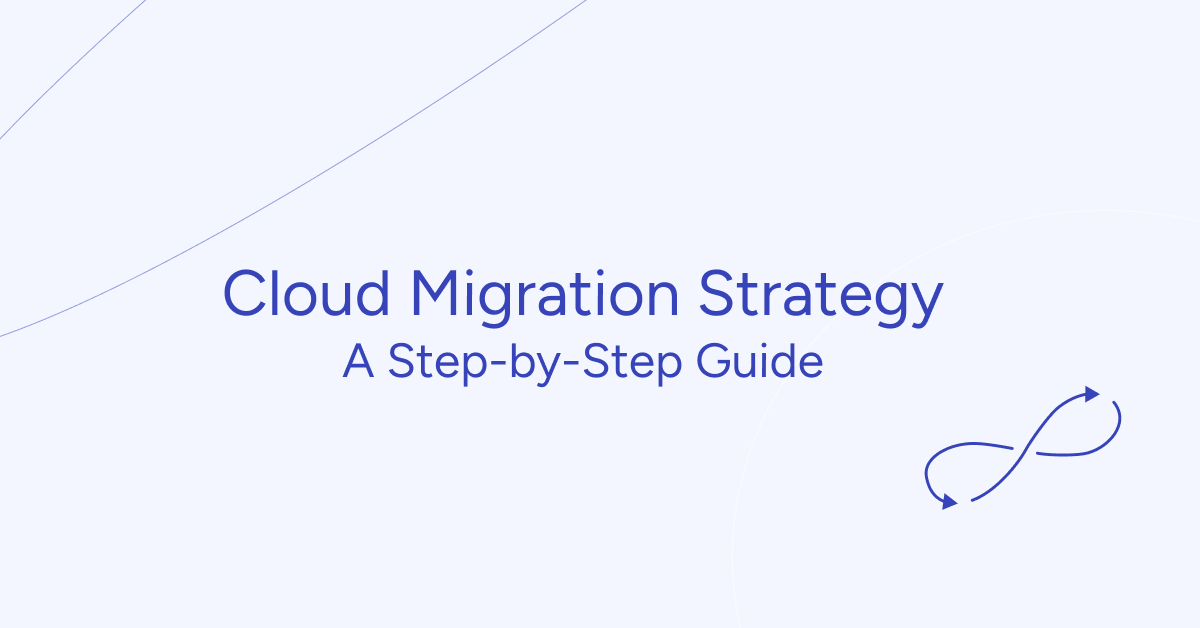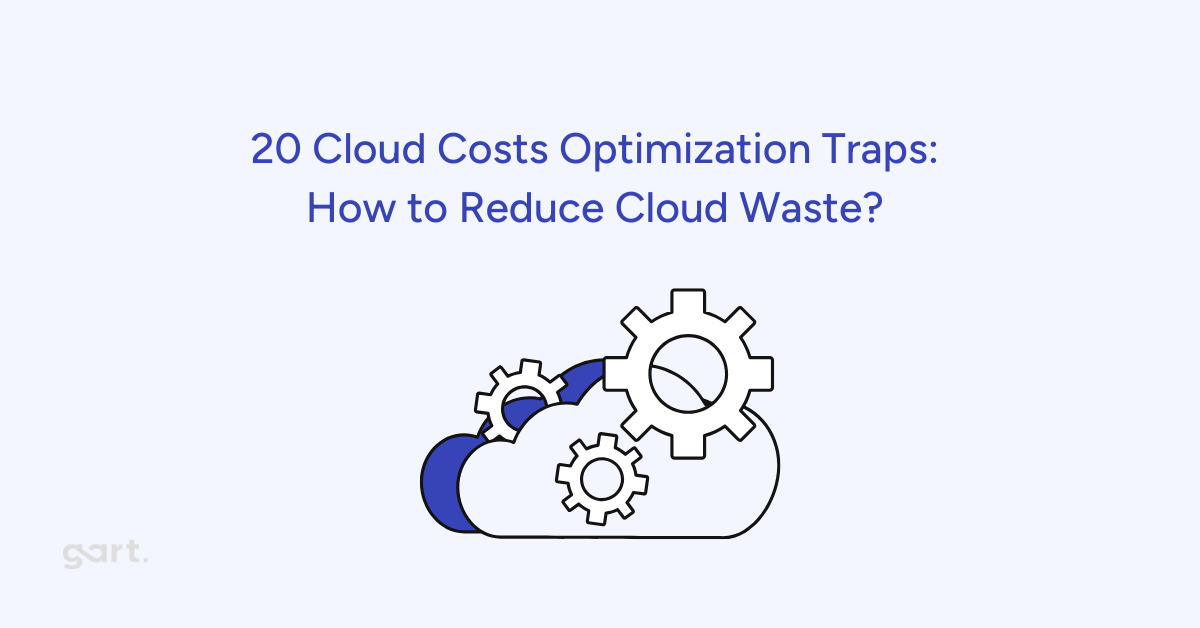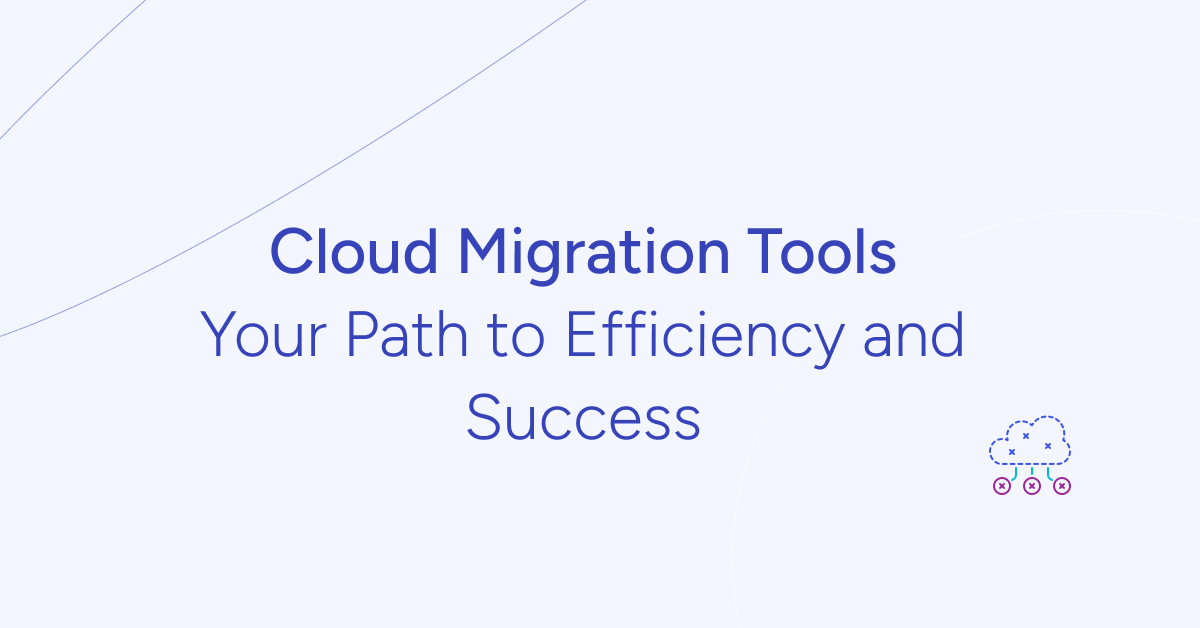Introduction
Cloud migration isn’t just a technical decision — it’s a strategic move that can shape a company’s future. But let’s be honest: cloud migrations can be overwhelming. They’re full of moving parts, hidden costs, and the ever-present risk of downtime. That’s where a cloud migration proposal comes into play.
Think of it as your migration GPS. It lays out the route, stops, and possible detours, so both the service provider and the client know exactly what’s coming. It’s not just a document — it’s a roadmap for success, alignment, and peace of mind.
One of the best real-world examples comes from Gart Solutions, a DevOps and cloud services provider that recently crafted a proposal for a phased AWS migration. We split the migration into manageable stages, clearly defined team responsibilities, forecasted expenses, and even estimated time commitments. This structured, step-by-step approach didn’t just build client trust — it de-risked the entire process.
What Is a Cloud Migration Proposal and Why Does It Matter
A cloud migration proposal is a formal document that outlines how an organization will transition its infrastructure, applications, and data from on-premises or legacy systems to the cloud. Whether you’re pitching a full re-architecture, a lift-and-shift strategy, or just moving a few key workloads, this proposal sets the tone for the entire project.
It’s a vital communication tool between cloud service providers (like MSPs, DevOps teams, or IT consultants) and clients. The goal? To make sure both parties understand what’s being done, how it’s being done, when it’ll happen, and how much it’ll cost.
Executive Summary of the Gart Solutions Proposal
Let’s take a closer look at how Gart Solutions structured their real-world cloud migration proposal to a client looking to move to AWS.

Here’s a snapshot:
- Phase 1: Discovery & Architecture – 30–40 hours of Cloud Architect time to assess infrastructure, create the AWS design, define the security framework, and outline the migration strategy.
- Phase 2: Infrastructure Migration – a 3–4 month project led by a DevOps engineer, involving CI/CD setup, PWA migration, database migration, and performance optimization. Cloud architect support continues with 10 hours/month.
- Phase 3: Monitoring & Alerting – a 1-month effort to implement monitoring dashboards, alerting systems, and incident runbooks.
- Phase 4: Support & Knowledge Sharing – ongoing support structure to maintain, optimize, and continuously improve the cloud environment.
Rates and Roles:
- Cloud Architect: $65/hour
- DevOps Engineer: $45/hour
What makes this proposal strong? It’s not just the technical accuracy — it’s the clarity. It helps the client visualize the journey, understand the roles, and predict the costs.
Phase 1 – Discovery & Architecture (November 2025)
In the first phase of any cloud migration, we focus on understanding the existing infrastructure, identifying risks, defining goals, and laying the foundation for a successful migration.
Objectives of the Discovery Phase
- Assess the client’s current on-premise or hybrid infrastructure
- Define the target cloud architecture (AWS in this case)
- Identify gaps in security, compliance, and scalability
- Build a migration strategy based on technical and business needs
For Gart Solutions, this meant bringing in a Cloud Architect for 30–40 hours to perform a deep-dive into the client’s systems — conducting an infrastructure assessment, reviewing existing workloads, evaluating the security posture, and mapping out a scalable AWS architecture.
Key Deliverables
- A comprehensive Infrastructure Assessment Report
- AWS Architecture Design Document
- Defined Migration Strategy and Security Framework
- Initial timeline and cost estimation.
Phase 2 – Infrastructure Migration (Dec 2025 – Mar 2026)
With the foundation in place, it’s time to move the infrastructure. This is where most of the work (and risk) lives. But with a clear plan from the discovery phase, this step becomes far less chaotic.
At Gart Solutions, we estimate 3–4 months of DevOps work here, supported by 10 hours/month from a Cloud Architect. This shows realistic planning — not underestimating the complexity or trying to rush through it.
Migration With Zero Downtime
One of the core promises in the Gart Solutions proposal is zero-downtime deployment. That’s a big claim, but with proper CI/CD implementation and blue-green deployment strategies, it’s absolutely achievable.
Here’s what happens during this stage:
- AWS Environment Setup with VPC, IAM, EC2, S3, and other core services
- Progressive Web App (PWA) Migration to the new environment
- CI/CD Pipeline Setup using tools like GitHub Actions, Jenkins, or GitLab CI
- Database Migration using tools like AWS DMS or manual data sync strategies
- Performance Optimization post-migration to ensure speed and reliability
Deliverables That Move the Needle
- Fully operational AWS infrastructure
- CI/CD pipeline ready for future releases
- Migrated and optimized application(s)
- Verified database integration and performance
- Risk mitigation plans and documentation
This is where the actual transformation happens. But it’s also the phase where many projects go over budget or miss deadlines. That’s why Gart Solutions helps avoid pitfalls, maintain best practices, and keep the migration aligned with the long-term vision.
Phase 3 – Monitoring & Alerting (April 2026)
After infrastructure is migrated, the work isn’t over — it’s just shifted gears. Now the focus turns to observability. Without the right monitoring tools in place, even a flawless migration can lead to hidden issues that slowly erode user experience or cause downtime in the future.
Gart Solutions allocates one month to set up a full-stack monitoring and alerting system, ensuring that the client’s team will have real-time visibility into performance, usage, and system health.
Why Monitoring Is Essential
Cloud environments are dynamic. Resources scale up and down, traffic patterns shift, and costs can spiral if left unchecked. That’s why monitoring and alerting are crucial for preventing problems.
Key Deliverables
- CloudWatch Integration for real-time metrics and logs
- Custom Dashboards tailored to specific workloads or KPIs
- Alerting Systems that notify the right team members via Slack, email, or incident tools
- Performance Baselines to track improvements or degradation over time
- Incident Runbooks to guide teams during outages or unusual behavior
Tools and Tech
Gart Solutions may integrate tools like:
- Amazon CloudWatch
- Grafana or Datadog
- PagerDuty or Opsgenie for alert escalation
- Terraform/Ansible for automated monitoring deployment
Phase 4 – Support & Knowledge Sharing (May 2026 Onwards)
A successful migration doesn’t just end with the last data packet — it continues through ongoing support, optimization, and education. This is what sets a vendor apart from a long-term technology partner.
Key Support Services Offered:
- Tiered Support Structure for different urgency levels
- On-Call Procedures to ensure 24/7 availability if needed
- Knowledge Transfer Sessions, so internal teams understand the new systems
- Continuous Optimization to improve costs, reliability, and performance
- Documentation Handover for full transparency and control
Even simple knowledge sharing (like explaining alert thresholds, walking through AWS billing dashboards, or training someone to redeploy a microservice) can unlock self-sufficiency — and that’s a huge win.
Roles & Responsibilities: Who Owns What
Clearly defining who does what and when is a pillar of any successful cloud migration project.
Cloud Architect
- Design AWS architecture
- Define security posture
- Advice on tooling and governance
DevOps Engineer
- Execute migration
- Implement CI/CD pipelines
- Set up monitoring, alerting, and automation
Client Responsibilities
- Provide infrastructure access and documentation
- Designate key stakeholders for approvals
- Assist in validation and performance testing
- Attend knowledge transfer sessions
Risk Management & Mitigation Strategy
No cloud migration is without risk. The difference between success and failure lies in how well those risks are identified, planned for, and handled. Gart Solutions incorporates proactive risk management throughout the migration lifecycle.
Common Risks in Cloud Migrations
- Downtime during migration
- Data loss
- Security misconfigurations
- Unforeseen costs from misused resources
- Scope creep due to unclear requirements
Gart Solutions’ Mitigation Plans
- Zero-downtime deployments using blue-green or canary strategies
- Automated backups before any system changes
- Infrastructure as Code (IaC) for reproducible, version-controlled setups
- Weekly stand-ups to spot and eliminate blockers early
- Staged rollouts with rollback mechanisms in place
Business Continuity
Every risk plan is designed with business continuity in mind — so users, customers, and internal systems stay online and functional even if unexpected hiccups occur.
Gart Solutions also offers optional disaster recovery services for clients in regulated or high-stakes industries.
Pricing Breakdown & Cost Transparency
Let’s talk numbers. One of the top concerns for any client is cost control, especially with cloud projects that often have moving targets.
Estimated Costs:
| Role | Rate (USD/hour) | Estimated Hours | Total Estimate (USD) |
| Cloud Architect | $65/hour | 40 (Discovery) + 10/mo | ~$5,000–$7,800 |
| DevOps Engineer | $45/hour | ~3-4 months (Full-time) | ~$21,600–$28,800 |
Note: These are estimates and subject to revision post-discovery.
Optional Add-Ons:
- 24/7 Monitoring Support
- Disaster Recovery Plan
- Infrastructure Cost Optimization
- Security Audits & Compliance Reports
What to Include in a Cloud Migration Proposal
If you’re creating your own cloud migration proposal (or customizing a template), knowing exactly what to include is crucial.
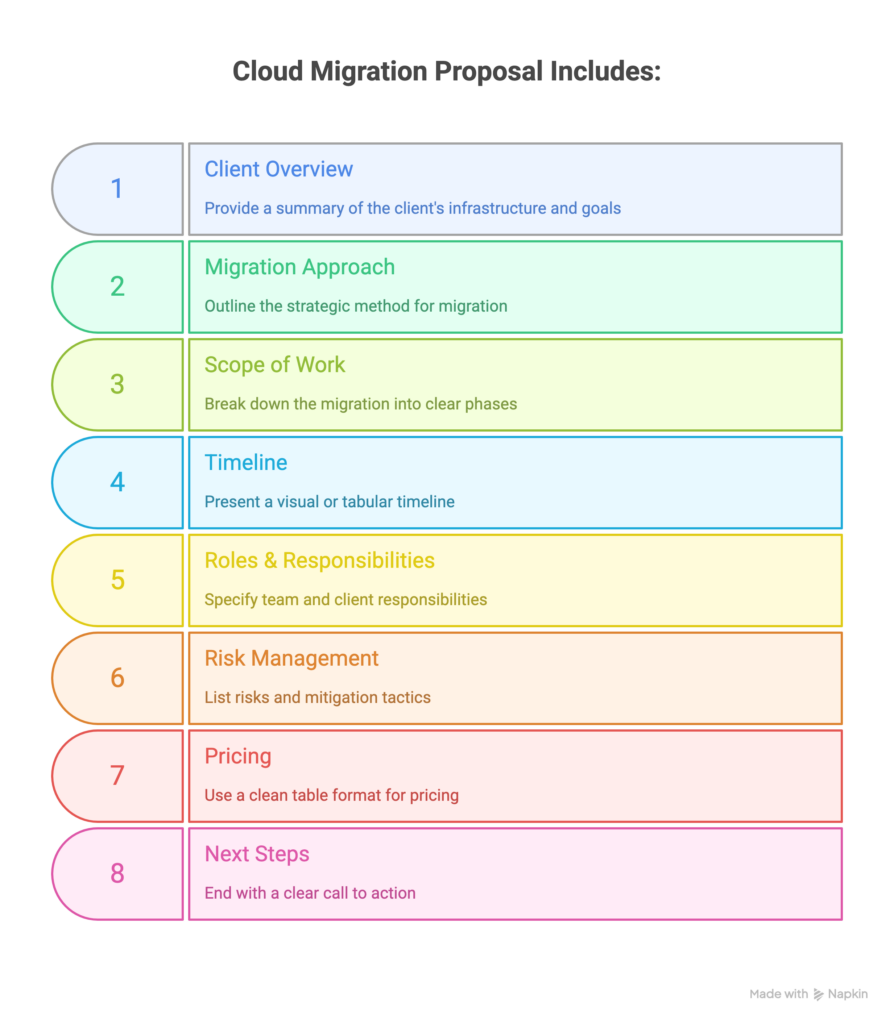
1. Client Overview
Provide a brief summary of the client’s existing infrastructure, business context, and why they’re pursuing cloud migration. This shows that you understand their pain points and goals.
2. Migration Approach
Lay out your strategic method:
- Lift-and-shift: Fastest method, minimal code change
- Re-platforming: Optimizing components without major architecture overhaul
- Re-architecting: Rebuilding for cloud-native performance
3. Scope of Work
Break the migration into clear phases like:
- Discovery & Planning
- Infrastructure Setup
- Application/Data Migration
- Validation & Testing
- Support & Optimization
For each phase, list deliverables and responsibilities.
4. Timeline
Give a visual or tabular timeline to show:
- When each phase starts/ends
- Downtime windows (if any)
- Milestones like “CI/CD complete” or “Monitoring live”
This helps the client plan ahead and coordinate internal resources.
5. Roles & Responsibilities
Specify:
- What your team owns
- What the client is expected to do
- Escalation contacts
- Collaboration tools (Slack, Jira, Notion, etc.)
6. Risk Management
List risks (downtime, data loss, scope creep) and your mitigation tactics. Show clients you’ve done this before and have the scars and strategies to prove it.
7. Pricing
Use a clean table format:
- Rates per role
- Estimated hours per phase
- Optional services or support tiers
8. Next Steps
End with a simple, clear Call to Action (CTA), such as:
- “Book a final discovery session”
- “Approve scope to start onboarding”
- “Review contract by [date]”
Cloud Migration Proposal Template You Can Use
Here’s a simple structure you can steal, copy-paste, or turn into a branded PDF deck or Notion page:
Conclusion: Why a Well-Written Cloud Migration Proposal Changes Everything
A cloud migration project isn’t just about moving from Point A to Point B — it’s about building a resilient, scalable, and future-ready foundation for a business.
By breaking your project into phases (just like Gart Solutions did), clearly outlining roles and timelines, and being upfront about costs and risks, you’re not just pitching a service —you’re proving your professionalism and technical maturity.
Make your proposal a powerful tool — not just a PDF.
See how we can help to overcome your challenges

